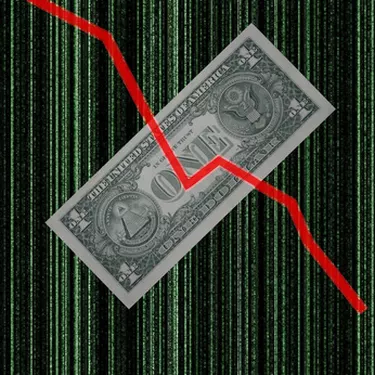
The New York Stock Exchange is part of NYSE Euronext, the world's largest group of exchanges. It combines markets in the United States and Europe. The New York Stock Exchange provides a market for the trading of stocks, bonds, commodities and other financial instruments. The NYSE in conjunction with the Securities and Exchange Commission (SEC) provides a set of guiding rules and principals concerning stocks listed on the exchanges.
Stocks That Fall Below $1
Video of the Day
Stocks listed on the NYSE have a number of strict rules and guidelines they must follow to protect shareholders and provide transparency and effective regulation. The principal rule is Section 802.01C of the Exchange's Listed Company Manual, which stipulates that the price of a stock must not fall below $1 for a consecutive 30-day trading period, nor should it have an average stock price closing below $2 in the same period. If this happens, the stock is considered non-compliant, and the company has six months to bring its share price and the average share price back above $1. If the company fails to do so or fails to acknowledge the fact, suspension and delisting procedures can take place.
Video of the Day
Delisting
Section 804 of the NYSE's manual outlines the delisting process for companies who are non-compliant with the NYSE's rules and regulations. The process involves suspending trading of the shares, informing the company of the delisting, removing the company from the exchange and formally communicating to the SEC via Form 25, which effectively strikes the company.
Right of Review
During any point in the delisting process the company has a right of review. Its shares remain suspended, but the company is required to demonstrate why it should not be delisted and how it plans to remain compliant.
Avoiding Delisting
Companies have few options to avoid delisting. Reverse stock splits are one principal way of avoiding the company's stock price from trading too low. In 2009, Revlon instituted a 10 for 1 reverse stock split, which allowed it to recover its stock price and also enable it to be more widely traded by institutions. Share buy-back programs enable companies to stimulate demand in their stocks and provide support above minimum levels.
Suspension or Amendment of Rules
The NYSE at its discretion and in consultation with the SEC has the ability to relax or suspend the rules governing the minimum stock price. These occasions occur in market volatile situations, such as in 2009 following the banking crisis. The NYSE and NASDAQ markets both suspended the rule in December 2008 for a period of three months to enable companies such as GM, Ford and Office Depot to recover their prices.